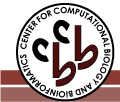| General information | | DisProt: | DP00041 | | Name: | High mobility group-T protein | | Synonym(s): | HMGT_ONCMY
HMG-T
HMG-T1
HMG-1
| | First appeared in release: | Release 1.0 (08/01/2003) | | UniProt: | P07746 | | UniGene: | Omy.32291 | | SwissProt: | HMGT_ONCMY | | TrEMBL: | | | NCBI (GI): | 123382 | | Source organism: | Oncorhynchus mykiss (Rainbow trout)(Salmo gairdneri) | | Sequence length: | 204 | | Percent disordered: | 100% | | Homologues: | |
| Native sequence |
10 20 30 40 50 60
| | | | | |
MGKDPRKPRG KMSSYAYFVQ TRREEHKKKH PEASVNFSEF SKKCSERWKT MSAKEKGKFE - 60
DLAKLDKVRY EREMRSYIPP KGEKKKRFKD PNAPKRPSSA FFIFCADFRP QVKGETPGLS - 120
IGDVAKKLGE KWNNLTAEDK VPYEKKASRL KEKYEKDITA YRNKGKVPVS MPAKAAAPAK - 180
DDDDDDDDDD DDEDDDDDDD EDDE
|
| Functional narrative |
Circular dichroism at pH 2 indicates that there is 9% helical content which is very much less than homologous proteins HMG-1 and HMG-2. As pH or salt concentration is increased, the structure proceeds to fold and aggregate into secondary and tertiary structure. According to NMR data, HMG-T lacks a highly acidic domain that suggests that the entire chain binds to DNA. This is different than HMG-1 and HMG-2, which have highly acidic domains that do not bind DNA.
|
| Map of ordered and disordered regions |


Note: 'Mouse' over a region to see the start and stop residues. Click on a region to see detailed information.
|
| Region 1 | | Type: | Disordered - Extended | | Name: | | | Location: | 1 - 204 | | Length: | 204 | | Region sequence: |
MGKDPRKPRGKMSSYAYFVQTRREEHKKKHPEASVNFSEFSKKCSERWKTMSAKEKGKFE
DLAKLDKVRYEREMRSYIPPKGEKKKRFKDPNAPKRPSSAFFIFCADFRPQVKGETPGLS
IGDVAKKLGEKWNNLTAEDKVPYEKKASRLKEKYEKDITAYRNKGKVPVSMPAKAAAPAK
DDDDDDDDDDDDEDDDDDDDEDDE | | Modification type: | | | PDB: | | | Structural/functional type: | Function arises via a disorder to order transition
| | Functional classes: | Molecular assembly
| | Functional subclasses: | Protein-DNA binding
| Detection methods:
- Circular dichroism (CD) spectroscopy, far-UV (pH: 2; )
- Nuclear magnetic resonance (NMR)
| References:
- Cary PD, Crane-Robinson C, Bradbury EM, Dixon GH. "Structural studies of the non-histone chromosomal proteins HMG-T and H6 from trout testis." Eur J Biochem. 1981; 119(3): 545-51. PubMed: 6273163
| Comments:
|
| References |
- Cary PD, Crane-Robinson C, Bradbury EM, Dixon GH. "Structural studies of the non-histone chromosomal proteins HMG-T and H6 from trout testis." Eur J Biochem. 1981; 119(3): 545-51. PubMed: 6273163
- Pentecost BT, Wright JM, Dixon GH. "Isolation and sequence of cDNA clones coding for a member of the family of high mobility group proteins (HMG-T) in trout and analysis of HMG-T-mRNA's in trout tissues." Nucleic Acids Res. 1985; 13(13): 4871-4888. PubMed: 4022777
- Stros M, Nishikawa S, Dixon GH. "cDNA sequence and structure of a gene encoding trout testis high-mobility-group-1 protein." Eur J Biochem. 1994; 225(2): 581-91. PubMed: 7957172
- Watson DC, Dixon GH. "Amino acid sequence homologies between the high-mobility-group proteins, HMG-T from trout testis and HMG-1 and -2 from calf thymus: is the poly-aspartic-glutamic acid polypeptide within the main chain?" Biosci Rep. 1981; 1(2): 167-175. PubMed: 6117336
- Watson DC, Peters EH, Dixon GH. "The purification, characterization and partial sequence determination of a trout testis non-histone protein, HMG-T." Eur J Biochem. 1977; 74(1): 53-60. PubMed: 852459
|
| If you have any comments or wish to provide additional references to this protein or its disordered region(s), please click here to e-mail us. |
Disprot-footer
|










